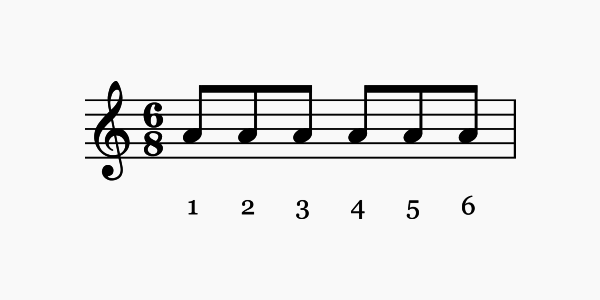Feeling the pulse.
The simplest way to get started when thinking about time signatures is to think about how they feel. Believe it or not, you’re probably already familiar with most if not all the time signatures we’ll be talking about here today. This is because just by listening deeply to your favorite song and really feeling the music already puts the two most important parts of a time signature into your head.
Play the ‘Mission Impossible Theme Song’ in our playlist and start tapping, odds are you’ve already identified the pulse which represents a single beat (the bottom number) and how many of them make up a single bar (the top number). When you hear the M:I Theme Song, and wanted to know the time signature, you probably wouldn’t go on counting forever “1, 2, 3, 4, 5, 6, 7…” for each beat. At some point, we loop over again. That’s almost always where the bar-line is. In the case of the M:I Theme Song, it’s at 5 and we’re counting these beats as quarter notes so we’re in 5/4 time.
This time, instead of just feeling out the music, we’ll start with a time signature and break it down. “How Can You Mend a Broken Heart” as performed by Al Green is organized in 6/8 time, which means that:
- There are 6 beats per bar and…
- The pulse which makes up a beat is an eighth-note (hence the 8)

An example of 6/8 time written out. The top number is how many beats in a bar, and the bottom number is which kind of pulse produces a beat, which in this case is an eighth-note.
When counting this time signature, we’ll say “1, 2, 3, 4, 5, 6” for each beat in a bar.
Most often when playing Melodics lessons, you’ll be concerned with the number of beats in a bar since this is where the groove and feel of the rhythm really plays out. Whether a groove is in 3/8 or 3/4 is a question of tempo, beats per minute, and the composer/producer’s taste. Check out the course on Exploring Time Signatures to experience them for yourself.

